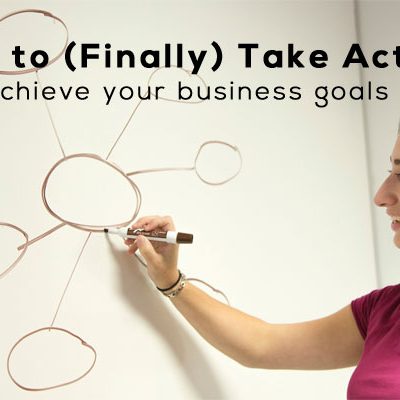
Leaders, consultants, and coaches are increasingly determined to guide their organizations to have greater diversity. And to ensure that diversity is valued. We assume this at Dalar because it’s a conversation that’s happening more and more in our coaching and consulting work.
But what does diversity mean in these conversations?
We ask what they mean when they speak about diversity. Increasingly, the initial focus that is reported to us is about hiring people to demonstrate a representative racial mix. Rarely are we getting answers in which diversity is being spoken about from a more expanded perspective.
This important work of racial diversity is (and has always been) necessary. It is becoming something that society is demanding in new ways. And, it is one piece of a much bigger puzzle that makes up a true, full, and robust approach to understanding and developing diversity in an organization’s workforce.
How big is your perspective about diversity?
Diversity needs to consider inclusion
In a recent keynote presentation on ‘diversity and inclusion,’ the presentation about diversity was the narrower yet vital focus of racial diversity. It was a good presentation, yet too narrow in scope. In undertaking the work of valuing diversity, the narrower scope doesn’t address the needs of many others who add to the diverse mix of people in additional ways.
When it came to the Q&A period, I asked “what can you share with us about inclusion?” Although billed as being about ‘diversity and inclusion,’ as the presentation hadn’t included anything about “inclusion,” the topic I was most interested in. She answered that she hadn’t figured out yet how to achieve inclusion, admitting that the greatest diversity in her organization was at the front lines, yet the senior management and Board room make-up did not include the diversity that the organization boasted of. In other words, one measure of failure in genuine inclusion.
This story is not uncommon. Our discussion with leaders continues, asking what their thoughts are about inclusion. Once they have a more diverse make-up of the people in their organization, will they open up all positions within the organization for the best people to claim the positions throughout the organization? Will they have development programs in place in the organization so that all of the diverse people have the chance to develop their skills to be “the best people to claim the positions” when they come available? Rarely do the leaders we work with have clear answers about either the intention to create the conditions for genuine inclusion, or plans for how to go about achieving it.
A big step forward comes in committing to and undertaking leadership development to expand the perspective of who and what is included in diversity. The leadership development to be undertaken also needs to include developing a perspective and a path forward to create the conditions for genuine inclusion…and genuine belonging.
What are your strategies for inclusion?
Inclusion Rooted in Equity
The nuance of different words always matters. Perhaps it matters even more when discussing topics that can feel emotionally charged. As we continue these conversations with leaders, we notice the words equality and equity being used, often interchangeably. The dictionary definitions reveal an important difference:
- Equality: the state of being equal, especially in status, rights, and opportunities
- Equity: the quality of being fair and impartial.
In our approach to diversity and inclusion, equity is what we choose to focus on. While equality makes opportunities open to everyone, equity makes sure that there is an approach that removes barriers and provides resources as needed to level the playing field. Making those opportunities accessible for everyone who wants to seize them. We understand that it is important to discern for ourselves what we want to put our energy into as we guide those who turn to us for their leadership development. This discernment is key to our approach.
How do you understand equity and what are you doing to develop it?
And a little note on fitting in
Diversity. Inclusion and belonging. Equity. And a last consideration for you for today – fitting in.
Growing up, we all learned the value of fitting in. In preschool, mastering the ability to not bite or hit when you were mad meant other kids liked to play with you. You can probably think of many other examples of fitting in that have been valuable in your life.
But fitting in can have a shadow side too. Especially as it relates to diversity and inclusion. As leaders, we have the responsibility to create the container that we are asking people to fit into in our corporate culture. The way office hours and holiday closures are set. Dress code. Communication styles and structures. The kinds of social activities offered for building team relationships. Each and every decision helps to shape the container we ask people to fit into. Developing leadership for working with diversity and inclusion means consciously creating a container that is big enough for your diverse workforce to feel like they belong, without having to mold themselves into a different shape to fit in.
What are your people needing to fit into?
Learn more and develop your diversity and inclusion strategy at Developing Leadership for Working with Diversity, Inclusion, Equity, and Belonging
 We are at a turning point in our societies that opens a window of opportunity. We have the opportunity to examine and understand what is lost when people have to mold themselves to ‘fit in’, to examine and understand an expanded view of diversity and then taking the best actions, to examine inclusion and belonging, and to turn attention and action to achieving more than diversity in our organizations…to achieve genuine inclusion and belonging.
We are at a turning point in our societies that opens a window of opportunity. We have the opportunity to examine and understand what is lost when people have to mold themselves to ‘fit in’, to examine and understand an expanded view of diversity and then taking the best actions, to examine inclusion and belonging, and to turn attention and action to achieving more than diversity in our organizations…to achieve genuine inclusion and belonging.
Join us, and colleagues from around the globe, for a week-long intensive learning experience to develop your leadership for understanding and working with diversity, inclusion, and belonging. With ample opportunity for important conversations, growth, and development, this online learning experience will connect you with your own beliefs and values and let you learn from the experiences of others around the world. The group size is small enough for everyone to have the opportunity to meet their unique learning needs and develop actionable plans for going forward. We hope you will join us in this learning journey.
Image by OpenClipart-Vectors from Pixabay











Leave a Reply
You must be logged in to post a comment.